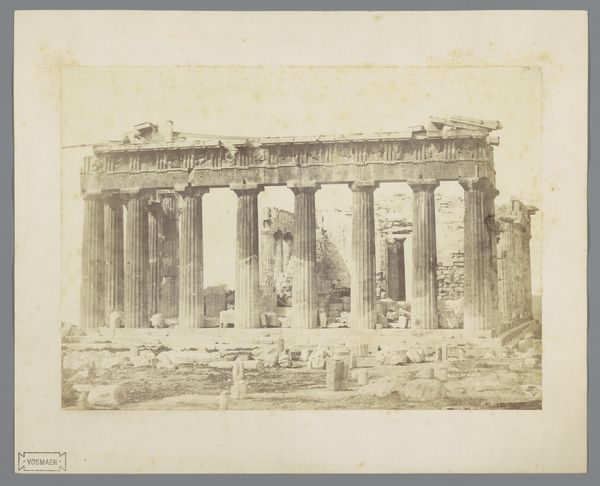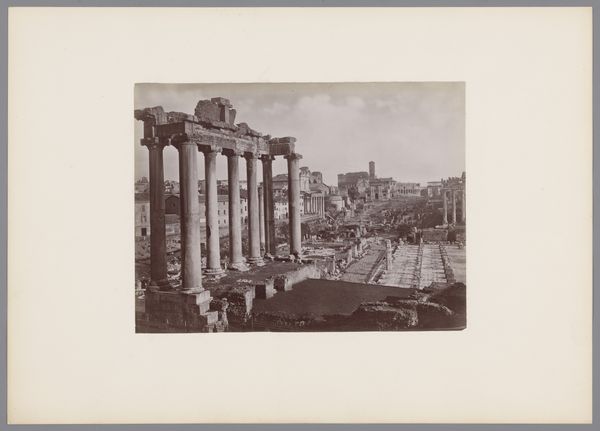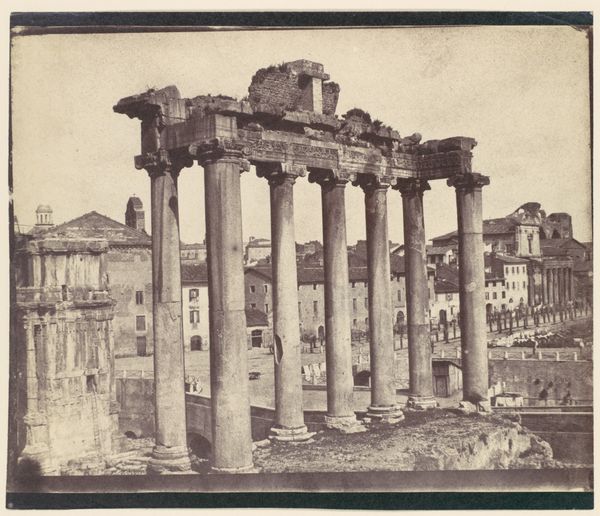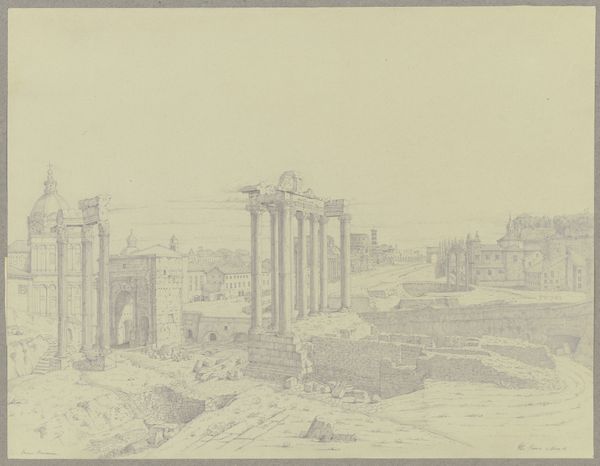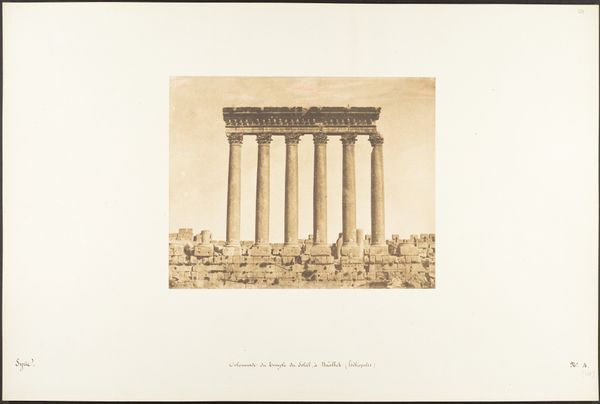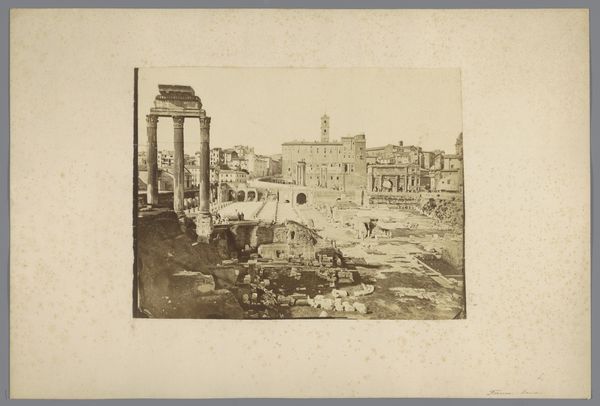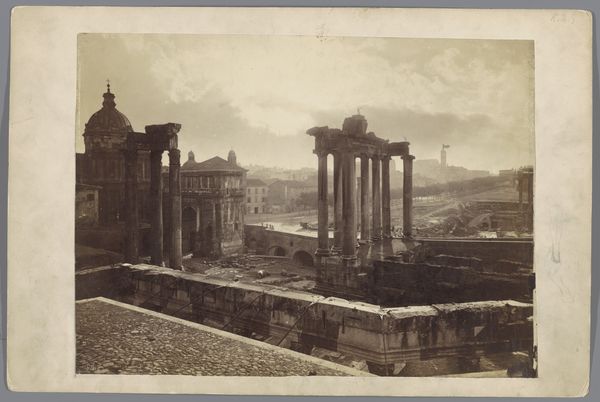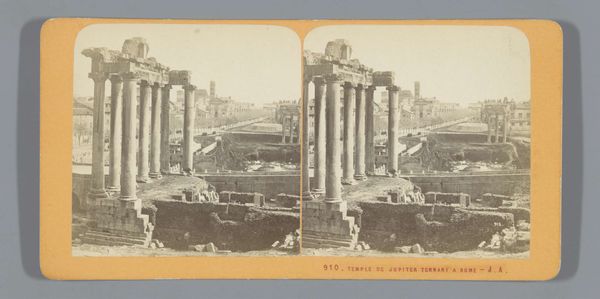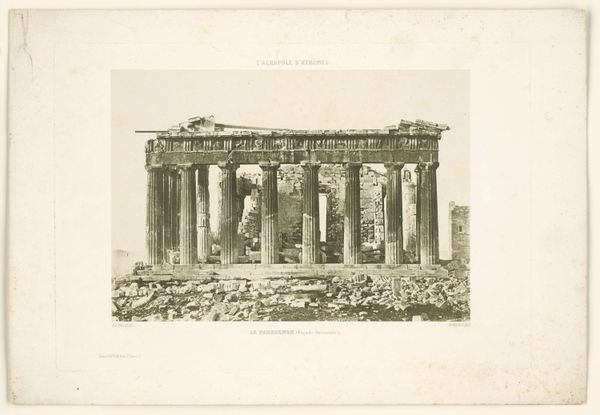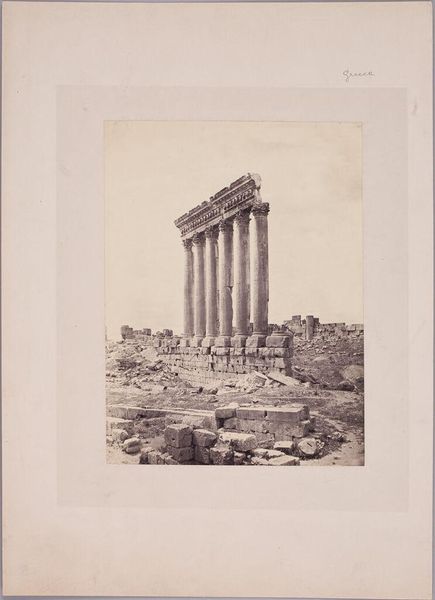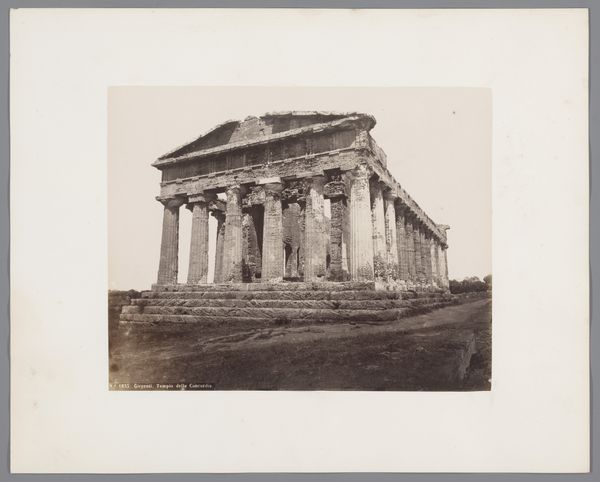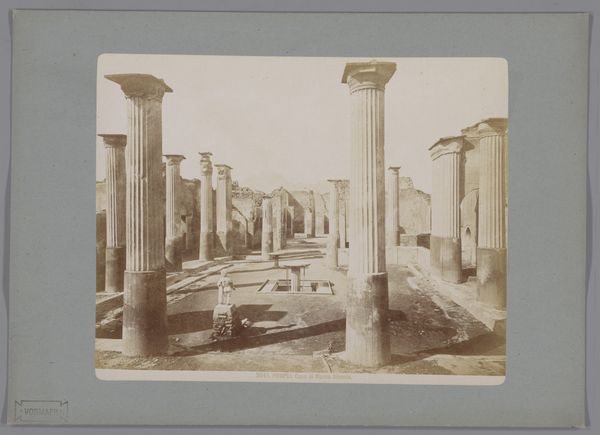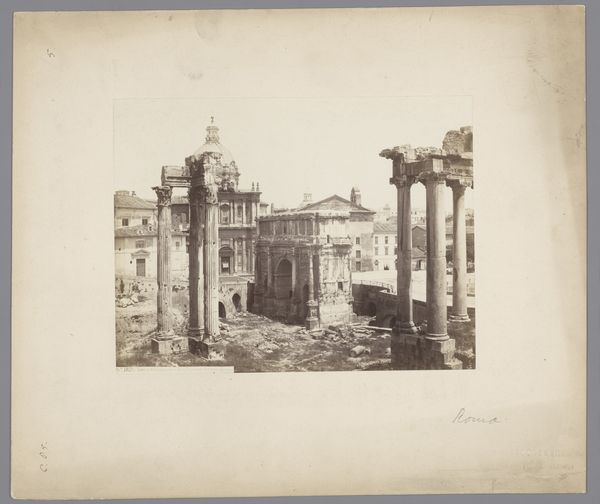
photography, albumen-print
#
aged paper
#
toned paper
#
light pencil work
#
pale palette
#
appropriation
#
landscape
#
classical-realism
#
photography
#
ancient-mediterranean
#
square
#
cityscape
#
albumen-print
Dimensions: height 319 mm, width 380 mm
Copyright: Rijks Museum: Open Domain
Curator: Before us, we have a vintage photograph titled "Ruines op het Forum Romanum te Rome, Italië," taken between 1867 and 1874 by Sommer & Behles. It's an albumen print. Editor: My first impression is the sepia tones evoke a strong sense of antiquity, perfectly capturing the weight and history embedded within these Roman ruins. The square composition frames the crumbling pillars in a striking manner. Curator: Absolutely. The photographers have skillfully used light and shadow to emphasize the texture and scale of the ruins. Notice the repetitive verticality of the columns against the horizontal expanse of the forum itself—a compelling interplay. This structured composition highlights the classical ideals of order imposed upon natural decay. Editor: Yet, I'm also drawn to the materiality of the print itself. An albumen print signifies a certain production process, involving coating paper with egg whites and silver salts. These methods were instrumental in documenting places like the Forum Romanum and distributing the photographic gaze during that era, democratizing the image, if you will, making a piece of Rome accessible for all. Curator: Yes, but observe how Sommer & Behles meticulously controlled their vantage point to compress depth. It guides the eye toward the more distant architectural features in the background. The photograph isn't simply a record. It constructs a visual experience. Editor: I concede that they curated the experience to produce and commodify the gaze. Considering the period, one ponders about labor: who developed these photographs, and in what circumstances? This production transforms physical places into capital for consumption through both industry and aesthetics. Curator: The success lies precisely in how they balance the grandeur of the subject with a tactile awareness of ruin. Consider the gentle, pale tonality—achieved, perhaps, through aging and processing effects on the albumen print that further suggests temporality and evokes longing for lost empires. Editor: Your interpretation elegantly binds our distinct readings. Curator: Indeed. Through differing lenses, we’ve found shared ground observing process, history, composition and its ultimate enduring visuality.
Comments
No comments
Be the first to comment and join the conversation on the ultimate creative platform.
